Mention of the America West brings to mind familiar images: Vast expanses of empty and enormous mountain peaks, cowboys and Indians on horseback shooting at each other, scenic wonders like the Grand Canyon and Yellowstone’s Old Faithful geyser. It’s a land of independent-minded men and tender but tough women, of faithful dogs and bloodthirsty cougars, of blazing heat and bitter cold. It’s a place where, more than anywhere else in the world, a person can make their way upward without forfeiting their integrity.
Yet these images miss much of the reality of today’s West. The land starting with the arid reaches of the Great Plains and running west to the Cascade Mountains and the Sierra Nevada that block off the Pacific Coast is indeed a place of scenic beauty. But it is also, by some measures, one of the most urbanized parts of the United States: Nearly half its people live in a metropolitan area with a population over 1 million. Today’s westerner is far less likely to be a rancher than a suburbanite, and the number of people making a living as cowboys is vanishingly small. The West contains the largest number of people identifying themselves as American Indians, but they have become outnumbered by those calling themselves Hispanics.
Politically, the West’s voting behavior is linked to an independence, and perhaps even a cussedness, with deep historical roots. In presidential and congressional elections, the mountain and plains states have voted solidly Republican for half a century, yet they’ve often chosen Democratic governors and legislators. And while many westerners, including but not limited to Mormons, are advocates of traditional cultural values, westerners also have a strong libertarian streak. For example, Colorado, Washington and Oregon are the only states that have voted to legalize marijuana. And westerners have long found traditional values compatible with women’s rights. Women’s suffrage was instituted in the Wyoming Territory in 1869.
When it comes to the role of the federal government, in many ways, the West was settled with acts and assistance that came from Washington. Yet many, especially in the sparsely settled areas of the West, feel fenced in by a federal government that owns most of the land and federal bureaucrats who they see as trying to limit their freedoms.
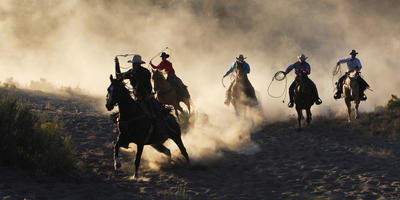
The West’s great contribution to popular culture was the Western novel, pioneered by Zane Grey in the early 20th century, and the Western movies and television shows that were a staple of universally popular entertainment for the better part of a century. Westerns always included a certain amount of violence — always an audience gainer — but at their best they also posed a moral dilemma, one especially piquant in newly settled territory: How to reconcile the freedom endemic to the frontier with the rule of law necessary to maintain a free society.
Though contemporary western shopping malls may feature cowboy boots and hitching posts, everyday life in today’s West has little resemblance to life in Western movies and television shows, which focus on surprisingly brief periods in the region’s history. But the West’s heritage and a continual tension between freedom and order have shaped the region in ways that are consequential to this day.
None of this was foreseen when the Louisiana Purchase of 1803 opened up the land west of the Mississippi to the citizens of the young republic, and the first explorers described the new lands as the Great American Desert. “The vast plains of the Western Hemisphere,” wrote Captain Zebulon Pike, who set out in 1806 from St. Louis to find the headwaters of the Arkansas and Red Rivers, “may become in time equally celebrated as the sandy deserts of Africa.” But he encountered more than the undulating, gently rising plains. Eight hundred miles west, Pike saw looming above the grasslands, 14,000 feet above sea level, the mountain he called the Highest Peak — and which has been known as Pike’s Peak ever since.
Exactly four score and seven years later, a New England schoolteacher named Katharine Lee Bates spent a summer in Colorado Springs, the small city that had grown up beneath Pike’s Peak, and hired a prairie wagon and mules to climb the mountain. “I was very tired,” she wrote later. “But when I saw the view, I felt great joy. All the wonder of America seemed displayed there, with sea-like expanse.” Returning to her hotel room, she wrote a poem every American today knows. “O beautiful for spacious skies, for amber waves of grain, for purple mountain majesties, above the fruited plain!”
“America the Beautiful” is a hymn of praise to the whole nation, but its inspiration and its imagery come from the region that natives and foreigners regard as the most American part of the country, the West. The story of the West is one in which the federal government in distant Washington sometimes plays a lead role, and one in which self-starting explorers, entrepreneurs and innovators often forge ahead. The history of the West is unique, and its distinctiveness is a result of the continual interplay of central government and free citizens.
The definition of the West that most accords with the realities of geography and climate, and with historical and cultural images, is one that includes the Great Plains and the Rocky Mountains, the junction of which so inspired Bates. It begins roughly along the 100th Meridian in the High Plains, the point beyond which annual rainfall is below 20 inches, and proceeds west to the Sierra Nevada and the Cascades, which drain almost all the ocean-created moisture into the relatively well-watered lands of coastal California, Oregon and Washington.
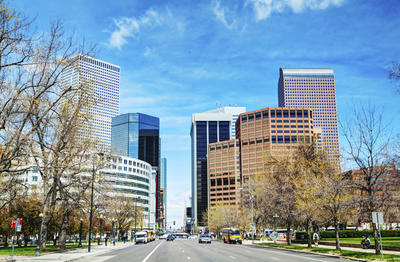
The Pacific Coast was conquered and settled largely from the ocean and, long after the transcontinental railroad was built, got most of its freight from ships; the Pan-Pacific International Exposition in San Francisco in 1915 celebrated the opening of the Panama Canal the year before.
In 1800, Americans knew almost nothing about this vast and mostly dry expanse. They had only just expelled British forces from the Great Lakes region and were still disputing the nation’s southern boundary with Spain. Settlers had crossed the Appalachians only a generation before, clearing trees and planting crops in the new states of Kentucky and Tennessee and what soon would be Ohio.
The sudden offer in 1803 of the Louisiana Purchase, snapped up by Thomas Jefferson despite constitutional qualms and his initial interest only in New Orleans, opened the way to the West. Secretly, Jefferson dispatched Meriwether Lewis and William Clark on their expedition northwest up the Missouri River and over the mountains to the Pacific and, also secretly, Louisiana Gov. James Wilkinson dispatched Zebulon Pike directly westward to find the headwaters of the Arkansas River.
The reports of Pike, Lewis and Clark did not entice farmers to settle what they described as desert or wilderness, but they attracted others. St. Louis fur merchant Manuel Lisa sent expedition members up the Missouri to trade furs, and these mountain men found and mapped the Great South Pass and the Great Salt Lake, the Colorado River and the Mojave Desert.
In the 1820s and 1830s, the fur trappers held a rendezvous each year along the Green River in Wyoming, while after Mexico declared independence, traders from Missouri made annual trips to its northernmost outpost of Santa Fe. These few explorers and entrepreneurs ventured over enormous distances in the West. They encountered many friendly and many hostile Indians, their numbers vastly reduced by communicable diseases, and enormous herds of buffalo, whose numbers increased as hunters died.
As the zone of settlement moved west toward and across the Mississippi River in the 1840s, a new national mood emerged. America had a “manifest destiny,” journalist and politician John O’Sullivan proclaimed, to expand across the continent to the Pacific. James K. Polk, the “dark horse” Democratic candidate for president, agreed. He campaigned in 1844 supporting the annexation of Texas and on the slogan “54°40′ or fight,” promising that he would force Britain to agree to give the United States all of the territory, up to the southern boundary of present-day Alaska, to the Oregon Territory, which they jointly occupied.
But thousands of Americans did not wait for Polk’s campaign promises to be fulfilled. They started streaming west, past the still uncertain boundaries of the Louisiana Purchase. They included New England Yankees heading out on the Oregon Trial to join the minister Marcus Whitman and his wife Narcissa at their settlement near Walla Walla.
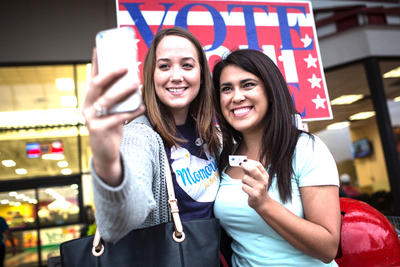
They included the carefully organized wagon trains of Mormons, leaving Illinois under their new leader Brigham Young along the Platte River, through the Great South Pass and to what Young identified as their promised Zion along the Great Salt Lake. They included the Donner party, headed to California on an ill-advised trail only to die starved and snowbound in the Sierra Nevada. In their different ways, they were trying to create communities in the expanse of the West like those they knew back east. In the process they were creating a new American West.
These Americans, like the trappers and the mountain men, were moving ahead of the flag. Upon taking office in 1845, Polk sanctioned the annexation of Texas and its admission to the Union. In June 1846, after threatening war, he got Britain to agree not to 54°40′ but to the extension west of the 49° parallel U.S.-Canada border east of the Rockies to where Puget Sound flows into the Pacific. He broke his campaign promise but brought in what would become Oregon, Washington, Idaho and parts of Montana and Wyoming.
The United States was already at war with Mexico, after American troops ordered by Polk to advance to the Rio Grande were attacked by Mexican forces. Polk persuaded Congress to declare war in May 1846. U.S. troops occupied the capitals of New Mexico and California and in September 1847 took Mexico City. With the Treaty of Guadalupe Hidalgo, in February 1848, the United States obtained more than half the land area of Mexico, including all of California, Nevada and Utah and most of Arizona, New Mexico and Colorado. The nation had spread, in Katharine Lee Bates’ words, “from sea to shining sea.”
Two divisive political issues were raised by the acquisition of new territory. One, first advanced early in the Mexican War, was whether slavery would be allowed there. The second was over the location of a transcontinental railroad tying California, where gold was discovered in 1849, to the rest of the nation. The first question was settled, temporarily, by the measures known as the Compromise of 1850, one of which was the admission of California to the Union as a free state; the free or slave status of the lands in between slave Texas and free California were left unresolved.
The pressing question of the location of a transcontinental railroad was a focus of regional rivalry. The first American railroads came into service in 1830 and there were only a few short lines operating west of the Appalachians by 1840. But their advance farther west seemed inevitable, as by 1840 rail lines extended west to two minor but strategically located towns, Chicago in the North and Atlanta in the South. Secretary of War Jefferson Davis favored a southern line; Illinois Sen. Stephen Douglas favored one headed west from Chicago. Military companies were dispatched to survey different northern, central and southern routes between 1853-1855.
To advance his central route, Douglas sponsored the Kansas-Nebraska Act of 1854, authorizing new territories to be created in the Great Plains and allowing settlers there to decide whether to permit slavery, contrary to the Missouri Compromise of 1820, which prohibited slavery in territories west of Missouri and north of its southern border. The prospect that slavery might extend over much of the American West appalled many northerners, leading to the creation of the Republican party, the splitting of the Democratic party and the Civil War. The West had divided the East.
The quarter century from the end of the Civil War until the Census Bureau declared that the frontier was closed in 1890 were the archetypical years of the American West, the time that would be celebrated through most of the 20th century in popular novels, Western movies and cowboys-and-Indians television programs. Much of this popular entertainment focused on very brief episodes, not much longer than the 18-month life of the Pony Express.
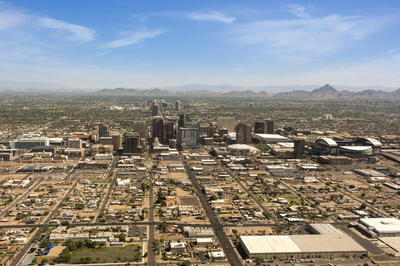
The great cattle drives on the Chisholm Trail from the plains of Texas began in 1867, when Joseph McCoy persuaded the Kansas Pacific Railroad to build a spur line to his stockyard in Abilene. After eight years, as the railroad extended west, the drives ended in Dodge City, one of the places where Wyatt Earp made his reputation; the drives ended in 1885 when a railroad reached central Texas.
The Indians, some of whom welcomed white settlers while others did not, were driven out of their lands into a series of ever more constricted reservations. During this period, the goal of settling productive farmers throughout the West was not fully realized. The Indians were vanquished; the invention of barbed wire in 1874 allowed farmers to inexpensively fence out herds of sheep and cattle, though not without some pitched battles with ranchers.
Demographically, the West in 1890 was still a small part of the nation, with less than 10 percent of the nation’s population. In electoral politics it had counted for very little: Kansas, Nebraska and Nevada had been admitted to the Union in the 1860s and Colorado in 1876, but it was not until 1889 and 1890 that they were joined by the Dakotas, Montana, Wyoming and Idaho.
The other states were admitted later — Utah in 1896, Oklahoma in 1907, New Mexico and Arizona in 1912. The Republican Congresses that had admitted most of the states expected they would support their party, but they didn’t in the 1890s. A sense of victimhood took hold in the West. Farmers facing bleak harvests blamed their plights on discriminatory railroad rates, speculators on the Chicago futures markets and greedy East Coast capitalists.
The sparsely populated silver states opposed the gold standard and overwhelmingly supported the Populist party call for an inflationary silver-based currency and rallied when Democrat William Jennings Bryan cried, “You shall not crucify man on a cross of gold.” In 1892, the West voted for Populist candidate James Weaver over Republican Benjamin Harrison. In 1896, the West gave more than 60 percent of its votes to Bryan over the winner, Republican William McKinley.
In the years after McKinley’s election, the economy boomed and indebted farmers no longer seemed in the grip of greedy creditors. In 1902, a Republican Congress passed the Reclamation Act, providing for federal irrigation projects financed by funds from land sales and President Theodore Roosevelt pushed for land conservation projects then popular in the West. The result was that Roosevelt, briefly a buffalo hunter in the Dakota Territory in 1885 and leader of the Rough Riders in the Spanish-American War, won more than 60 percent of the votes in the West in 1904.
The West of the 20th century had been built both by individual initiative and with government assistance and direction, a combination that Westerners regarded with ambivalence. Federal land policies encouraged settlers to build farms, and in the quarter century from 1890 to World War I, the Great Plains grew robustly. Water became more plentiful in part because of federal water projects, but also because farmers tapped the giant Ogallala Aquifer. Farm prices boomed, and were subsidized during World War I. That created a demand for federal farm price supports, vetoed by Republican presidents in the 1920s but instituted as part of the New Deal in the 1930s.
Government farm programs did not always protect farmers against market fluctuations, and the Dust Bowl of the 1930s emptied out large parts of Oklahoma and Kansas. Increased mechanization made farming machine rather than labor-intensive, with young people leaving the farms to make their living elsewhere. Many Plains counties have never again reached their 1940 peaks of population and voter turnout. Meanwhile, Colorado and Utah continued to grow relatively steadily, at rates just above the national average, while the other Rocky Mountain states remained among the nation’s least populous, with small clusters in mining centers and rail junctions.
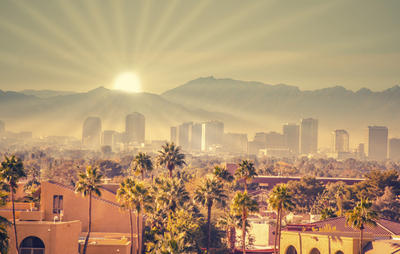
In the years after World War II, the West was transformed: A region that had fewer than 3 million people in 1890 has grown to almost 40 million today. Airline travel made a region previously remote from most Americans accessible to businessmen and travelers. Air conditioning made the southern deserts habitable. The Central Arizona Project, designed to bring water to cotton farmers in the lands around Phoenix (1950 population 106,000), ended up supplying water to what has become the West’s largest metropolis (2010 population 4.4 million).
Denver also grew and became one of the nation’s leading cities (2010 population more than 3 million). The empty spaces of the Rocky Mountain states, previously punctuated by mining towns, were now the home of ski resorts — Aspen, Vail, Telluride, Park City, Jackson Hole, Big Sky.
Westerners had long thought of themselves as victims of faraway elites: railroad executives who set what they thought were exorbitant rates, commodities traders who produced wide fluctuations in farm prices, East Coast and British investors who reaped the benefit of major mining operations. The federal government was seen as a countervailing force, working for the little guy against the distant giants. But the vibrant growth of the West from the war years on helped produce another state of mind, one that saw growth produced by individual initiative and self-reliance, and one that saw the government as a barrier to growth rather than a benefactor.
Those new attitudes helped launch political movements that swept the nation. Barry Goldwater, born in Phoenix before Arizona became a state, became a leader of conservative Republicans who sought not just to tame big government but to roll it back. He reflected a regional political trend. The West had voted more Democratic than the nation in most elections up through 1940, and after World War II the West voted in 1948 for Harry Truman, who suggested that Republicans would repeal farm subsidies and water projects.
But only once since then has a Democratic presidential candidate carried the region, which has voted significantly more Republican than the national average ever since. As the Republican presidential nominee in 1964, Goldwater lost nationally in a landslide. But he carried Arizona and made inroads in other Western states that had been strongholds of miner and farmer populism.
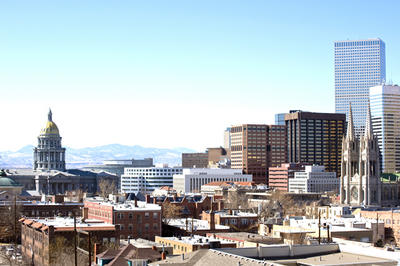
Another political movement that came out of the West was environmentalism. As Eastern cities spread out into the suburbs, there was little sharp demarcation between developed areas and the natural environment. Not so in Western cities like Denver, where looming mountains and naked plains are visible not many miles away. In the early 1970s, a group of Colorado liberals, mostly newcomers to the state, successfully blocked a bid for the Winter Olympics, and Colorado Democratic primary voters defeated a veteran congressional incumbent who promoted water projects for an opponent who argued they damaged the natural environment.
This environmentalism was not universally popular in the West, however. Landowners resented restrictions imposed by federal agencies that limited logging, grazing and irrigation on federal lands — critical since most land in the West is still owned by the federal government. This backlash was especially pronounced during Democratic administrations, igniting a “sagebrush rebellion” in the late 1970s and a similar movement in the late 1990s — and solid Western majorities for Ronald Reagan in 1980 and George W. Bush in 2000.
The West has not voted as solidly Republican in the 21st century. The inrush of Mexican and other Latin immigrants has helped tilt Colorado and Nevada to Barack Obama in 2008 and 2012, as did the votes of Hispanics — most of them not the product of recent immigration but descendants of longstanding residents — in New Mexico. At the same time, the traditional cultural values of Mormons — a majority in Utah and a large minority in Idaho — has made those two states two of the most Republican in the nation.
The West seemed transformed from a bastion of Republican conservatism, as it was for George W. Bush in 2004, to a political battleground in which both parties scrapped for advantage. That could well be the case again in 2016. Democrats hope their presumed nominee Hillary Clinton can carry not only the three states won by Barack Obama — Colorado, Nevada and New Mexico — but also two others — Arizona and Montana — carried once by her husband. Republicans hope their nominee can replicate their 2014 gains in the three Obama states and hold on to those carried by Mitt Romney and John McCain. Their chances may hinge on whether they can win over the West’s increasing numbers of Hispanic and Millennial Generation voters.
It may also hinge on which partisan direction the West’s libertarian thrust takes. The West has been in the vanguard of changes that have made conduct considered criminal in postwar America (marijuana use, homosexual acts) or which majorities at the time favored making criminal (gun ownership). Now three Western states have legalized marijuana, the Supreme Court seems likely to legalize same-sex marriage and most of America, not least the West, has rejected gun control measures backed by Eastern elites.
The thrust of these changes has been in a libertarian direction, but with an important qualification: a recognition of the need for self-restraint and responsibility. Colorado is grappling with the practical consequences of legalized drugs. Same-sex marriage not only grants rights, but imposes restrictions and responsibilities. Gun ownership is limited to those who can demonstrate they are responsible citizens capable of handling firearms safely.
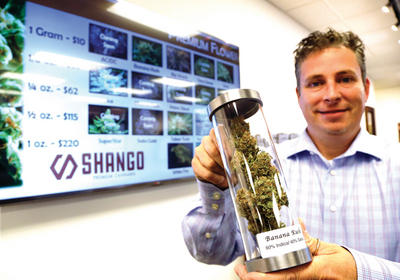
After the 2004 election, in which George W. Bush swept the West, Democrats shrewdly targeted the region for gains. Naturally they went after New Mexico, a marginal state in recent elections, and Nevada, where the obvious strategy was to register and turn out recent immigrants in Las Vegas — one of the metro areas hardest hit by the housing price collapse. Democrats were successful as well in turning around Colorado, which when the states are arrayed in order of Democratic percentage cast the decisive 270th electoral vote for Barack Obama in 2008 and 2012.
Republican strategists, looking past the party’s crowded primaries and caucuses to the 2016 general election, need to target the West as well. The landslide elections of Govs. Brian Sandoval and Susana Martinez in Nevada and New Mexico should provide clues as to how the Republican presidential nominee can appeal to Hispanic voters more effectively. Colorado’s private sector-driven economic growth and its libertarian thrust on issues ranging from drugs to guns provide bases for the kind of success Republican Sen. Cory Gardner achieved in 2014, winning a race that had been written off by national oddsmakers. The party needs to campaign as a champion of freedoms — but freedoms that also impose responsibilities.
America generally, but the West in particular, is grappling with the tension between freedom and order, between liberty and responsibility. It is the same tension highlighted in the best of the classic Western movies — and with which real live westerners grappled, as they settled, tamed and developed what their pioneers had been told was the Great American Desert.

